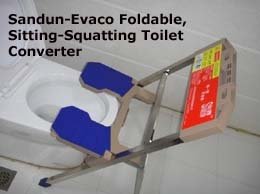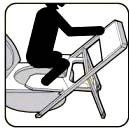|
Ulcerative Colitis – What It Is... And How You Can Prevent It
Like Crohn's Disease, ulcerative colitis is an inflammatory bowel disease (IBD), the general name for diseases that cause inflammation in the small intestine and colon. But unlike Crohn's Disease, which can affect any part of the digestive tract (from mouth to anus), ulcerative colitis affects only the colon.
Prevention is best. Here's why... About 25 to 40 percent of ulcerative colitis patients eventually have their colons removed because of massive bleeding, severe illness, rupture of the colon, or risk of cancer. And about 5 percent of patients develop colon cancer.
The medical establishment does not know the exact cause of colitis. Yet, it is possible to identify the underlying cause based on the evidence available and an understanding of how the colon works. For a start, there is a high incidence of ulcerative colitis in the Western world. However it is rare in the developing world... In the United States and Northern Europe, the incidence of ulcerative colitis is about 8 to 15 people per 100,000. In Japan, where the incidence is the lowest, it is 0.34 per 100,000. The data on the number of colitis cases in several countries is not available. However, the trend is clear enough. In 1997, The Lancet reported the findings of a study on inflammatory bowel diseases: "The last half of this century has seen a rising incidence of inflammatory bowel disease in developed countries," but notes "... the apparent absence of IBD in developing countries." The National Digestive Diseases Information Clearinghouse, US Department of Health and Human Services, also found that "a higher incidence of ulcerative colitis is seen in Whites and people of Jewish descent."
The section on Crohn's Disease explains why the use of the sitting posture for waste evacuation is the root cause of the disease. It is the same for ulcerative colitis. The inflammation, sores and ulcers in rectum and colon is the result of poor colon hygiene arising from the use of sitting toilets. By forcing users to sit instead of squat, sitting toilets make it impossible to empty the bowels completely. They cause stagnation of waste in the colon. The affected areas are exposed to toxins. Virulent bacteria establish colonies and inflame the surrounding tissues. The medical establishment has ignored the toilet connection. As a result, it does not know why so many are affected by inflammatory bowel diseases. By refusing to acknowledge that squatting could prevent and help treat colon diseases, it resort to treatments involving drugs and surgery -- to the detriment of patients.

Is the design of their toilets, and their toileting posture: squatting. Here are the reasons why squatting can make all the difference.. 1) With both thighs pressed against the abdomen, intra-abdominal pressure increases to compress the colon naturally. This enables waste to be expelled more easily. 2) The colon has an inlet valve called the ileocecal valve which connects it to the small intestines. The right thigh ensures that the ileocecal valve would be closed securely. This seals the colon and prevent waste from contaminating the small intestines. 3) The right thigh also squeezes the cecum, which receives wastes from the small intestines, to clear it of wastes. This keeps the cecum (and also the ileocecal valve and appendix) clean. 4) The left thigh also releases a natural obstacle in the form of a bend where the sigmoid colon joins to the rectum. This allows waste to flow freely to the rectum. 5) In the squatting position the rectum - controlled by the puborectalis muscle - is in the relaxed position. This straightens the pathway to the anus and the waste (stools) can be passed out easily without any straining.
In short, Nature has designed the colon with squatting in mind. The proliferation of sitting toilets in the world today has changed things for entire populations...with devastating consequences. The high incidence of colon diseases is a manifestation that something is seriously wrong with the porcelain throne... It is a vicious cycle. Sitting for evacuation is linked to many colon ailments and diseases. By forcing users to sit and preventing them from squatting, sitting toilets has resulted in the majority of Westerners being incapable of squatting, which could have prevented these ailments and diseases in the first place. How a person can lose his or her ability to squat is explained on this page about squatting facets. But squat you must… It the only way - along with other good health habits - to protect against many sitting toilet-related ailments and diseases. With some practice, almost everyone can regain the ability to squat again. This would then enable one to switch from sitting to squatting, using one of the options listed
here.

Have A Great Story About This Topic?Do you have a personal account about the topic discussed on this page? Please consider sharing it. You can be sure that many people in the world would love to read about and greatly benefit from your experience. It's easy to do. Just let your words flow. Thanks for sharing! What Other Visitors Have SaidClick below to see contributions from other visitors to this page...
Colitis Not rated yet
Squatting and my colitis Not rated yet
|
The Best Toilet Converter in The World Today!


Helping People All Over
The World Achieve
Good Health Through
Correct Toileting Posture
Watch video on the
origin and story of
the Sandun-Evaco
toilet converter
All about Life,
Hope and Truth...
FREE:
One of the most
astounding books
you will ever read
in your life!











